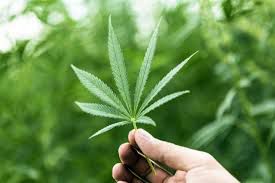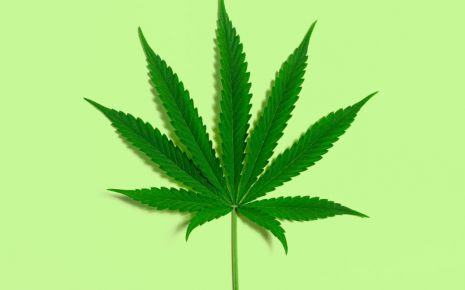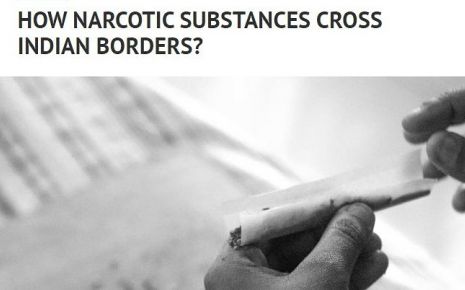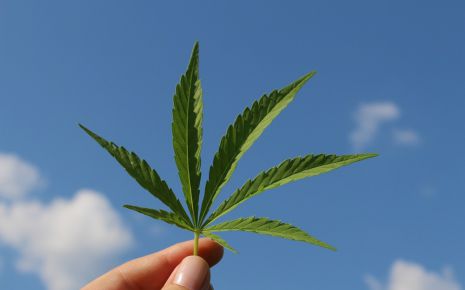Prohibition, Control And Regulation Of NDPS
The Opium Act was established in 1857. The primary goal of the law was to
limit and regulate opium usage and consumption in society to control opium
harvesting and cultivation. However, the statute did not address every narcotic
drug in use, and thus the Dangerous Drug Act was introduced in 1930. The
narcotics drugs and psychotic substance act was passed in 1985 as a result of
modifications made in response to the numerous flaws that both statutes had.
This law's primary purpose was to forbid, restrict, and regulate activities involving controlled drugs. Moreover, it offers a licence system that allows the federal government and state governments to control the production, importation, interstate traffic, transit, sale, and possession of narcotics. There are 5 sections to the statute. The list of psychotropic substances may be amended by the central government.
In line with S.O. 1350 (E) dated 13.3.2019, along with the currently registered manufactured pharmaceuticals, a few modifications to substances, salts, and preparations thereof have also been declared manufactured drugs.
Narcotics are chemicals that make the senses less effective and relieve pain. In the past, the term "narcotics" was used to refer to all types of drugs, but it is now more commonly used to refer to heroin, its derivatives, and its semi-synthetic forms. These medicines are referred to as opioids as well. Heroin and prescription medications like Vicodin, codeine, morphine, and others are a couple of examples.
The term "drugs" is also frequently used to describe opioid painkillers. Its main function is to alleviate severe pain that other painkillers are unable to appropriately manage. They can be quite helpful in the treatment of pain, provided that they are used cautiously and under the direct supervision of a healthcare professional.
Also, depending on the quantity recovered, those who cultivate, manufacture, possess, sell, buy, transport, and traffic in illicit cannabis may face legal or criminal penalties. Similarly, imprisonment can result in a severe jail term of up to one year and a fine of up to Rs 10,000 if you are discovered in possession of a "small quantity" of cannabis.
If the amount is larger than a small quantity but less than a commercial quantity, the offender might receive a harsh 10-year prison sentence and a fine of up to Rs 1 lakh. Cannabis used in commercial amounts will result in strict incarceration for a term that must not be less than 10 years but may reach 20 years. Together with the court's authority to impose fines of more than two lakh rupees, a fine of not less than one lakh rupees and up to two lakh rupees may also be imposed. A "small amount" of cannabis, according to the Department of Revenue, is one kilogramme or less, whereas a "commercial quantity" would be 20 kilogrammes or more.
The Act mandates severe penalties for repeat violators, including fines up to one and a half times the maximum fine and jail terms up to one and a half times the maximum period of imprisonment. Depending on the quantity of narcotics confiscated, repeat offenders may also get a death sentence if they are proven guilty of a related offence.
In line with paragraph 3 of Section 4, the Central Government established the Drugs Control Bureau, which has the special duty of coordinating drug law enforcement on a national level. The NCB serves as the national liaison coordinator and a focal point for gathering and distributing intelligence based on the parameters of the national plan.
The statute specifically grants the ability to issue search and arrest warrants to both Magistrates and specially designated personnel of the Central and State Governments. This technology should allow for rapid and appropriate responses to any information, preventing the need for a warrant to be issued. Hence, prompt and efficient reactions to any information are ensured.
Nevertheless, the NDPS Act does away with the Section 35 requirement of having dishonest purpose and instructs the court to presume the existence of a guilty mental state for all Act-related offences. So, conscious possession must be involved in situations where possession is illegal under the Act.
The NDPS Act has undergone a significant revision that includes harsher guidelines and the insertion of Section 27A for funding illegal activity. Production, possession, sale, purchase, transit, storage, and anybody detained under section 27A are all considered to be involved in trafficking in illegal narcotics.
Narcotic Drugs And Psychotropic Substances (Amendment) Act, 2001:
This updated law aims to rationalise sentence by improving its objectivity. Addicts could now negotiate the law more easily, and bail was also liberalised.
Narcotic Drugs and Psychotropic Substances (Amendment) Act, 2014:
The NDPS Amendment 2014 went into effect on May 1st, 2014. The NDPS act's Section 71 outlines how drug cases should be handled, including the regulations for treatment facilities. The Act's high-level offences were subject to harsher penalties as a result of the earlier changes, which also made drug use illegal. Morphine manufacturers now need a single licence from the relevant State Drugs Controller, as opposed to the previous process that needed many permits with various validity periods and lengthy stages.
The amendment prevented state-by-state disagreement by achieving consistent regulation across the nation. Patients now have easier access to a number of necessary drugs that are utilised in pharmaceutical formulations, including morphine, fentanyl, and methadone. As a compromise, the death penalty was changed to a specific 30-year term for repeat offenders found guilty of trafficking substantial amounts of narcotics. The maximum punishment for "small amount" offences has now been increased from 6 months to 1 year as a result of this revision.
The Narcotic Drugs and Psychotropic Substances (Amendment) Bill, 2021:
The Narcotic Drugs and Psychotropic Substances (Amendment) Bill, 2021 was presented in the Lok Sabha on December 6, 2021. The Narcotic Drugs and Psychotropic Substances (Amendment) Ordinance, 2021 will be replaced by it. The bill amends the Narcotic Drugs and Psychotropic Substances Act, 1985 to fix a drafting error. The Act describes the laws and standards governing certain activities involving narcotic and psychotropic drugs (such as their production, transportation, and consumption).
When the Act was revised in 2014, the definition of unlawful activity was altered. The language in this section, which still makes reference to the preceding clause number concerning the penalties for funding such illegal actions, was not changed. The portion of the Bill that deals with fines gains a new clause number.
Conclusion:
India's drug issue is considerably worse than it seems. Ganja, charas, and other psychoactive drugs were utilised in ancient India for psychotherapy, pain treatment, and other therapeutic purposes. Prior to 1985, there was no legislation in India that made drug possession or usage illegal.
Now, it's crucial to remember that the NDPS Act has various clauses that outline harsh penalties. For more serious offences, the right to bail cannot be granted, as stated in Section 37. This statute was more stringent than the Unlawful Activities (Prevention) Act of 1976 (UAPA), and as a result, the courts tended to be unwilling to release offenders on bond.
Many laws are designed to address social issues, but when they are applied incorrectly, they can have harsh consequences. When laws are increasingly restrictive, harsh legislation is more likely to appear. The NDPS has the potential to be abused much more given how stringent it is. The courts must thus make sure that the law is not used as a weapon and that justice is served to all societal groups. Written By: Sakshi Sharma
This law's primary purpose was to forbid, restrict, and regulate activities involving controlled drugs. Moreover, it offers a licence system that allows the federal government and state governments to control the production, importation, interstate traffic, transit, sale, and possession of narcotics. There are 5 sections to the statute. The list of psychotropic substances may be amended by the central government.
Narcotic Substance:
Under Section 2 of the NDPS Act, different terminology used in the law are defined. Narcotics are defined in a completely different way in the law than they are when used as a sleep aid. Coca leaf, cannabis (hemp), opium, poppy stems, derivatives/concentrates of any of these substances, and other substances announced by the government in its official gazette are all considered narcotic drugs under Section 2(xiv) of the Act.In line with S.O. 1350 (E) dated 13.3.2019, along with the currently registered manufactured pharmaceuticals, a few modifications to substances, salts, and preparations thereof have also been declared manufactured drugs.
Narcotics are chemicals that make the senses less effective and relieve pain. In the past, the term "narcotics" was used to refer to all types of drugs, but it is now more commonly used to refer to heroin, its derivatives, and its semi-synthetic forms. These medicines are referred to as opioids as well. Heroin and prescription medications like Vicodin, codeine, morphine, and others are a couple of examples.
The term "drugs" is also frequently used to describe opioid painkillers. Its main function is to alleviate severe pain that other painkillers are unable to appropriately manage. They can be quite helpful in the treatment of pain, provided that they are used cautiously and under the direct supervision of a healthcare professional.
Psychotropic Substances:
Moreover, any chemical that alters the mind is referred to as a "psychotropic substance." Any substance that is listed as a psychotropic substance in the Schedule of the NDPS Act, whether it be natural or synthetic, or any of its natural derivatives, is referred to as a "psychotropic substance" in Section 2(xxiii). For instance, ketamine, alprazolam, diazepam, methaqualone, and amphetamine.Punishment Under NDPS Act:
The NDPS Act specifies a range of punishments based on the quantity of narcotics found. The harshness of the punishment will vary depending on the offence. If the narcotics were used for personal use, the sentence can be lessened. In response to changes, it now categorises punishment into three groups based on the quantity of drugs found and gives judges discretion over the harshness of the sentence. In the case of cannabis, harsh prison time of up to 10 years may be imposed together with a fine of up to Rs 1 lakh as penalties for growing the plant.Also, depending on the quantity recovered, those who cultivate, manufacture, possess, sell, buy, transport, and traffic in illicit cannabis may face legal or criminal penalties. Similarly, imprisonment can result in a severe jail term of up to one year and a fine of up to Rs 10,000 if you are discovered in possession of a "small quantity" of cannabis.
If the amount is larger than a small quantity but less than a commercial quantity, the offender might receive a harsh 10-year prison sentence and a fine of up to Rs 1 lakh. Cannabis used in commercial amounts will result in strict incarceration for a term that must not be less than 10 years but may reach 20 years. Together with the court's authority to impose fines of more than two lakh rupees, a fine of not less than one lakh rupees and up to two lakh rupees may also be imposed. A "small amount" of cannabis, according to the Department of Revenue, is one kilogramme or less, whereas a "commercial quantity" would be 20 kilogrammes or more.
The Act mandates severe penalties for repeat violators, including fines up to one and a half times the maximum fine and jail terms up to one and a half times the maximum period of imprisonment. Depending on the quantity of narcotics confiscated, repeat offenders may also get a death sentence if they are proven guilty of a related offence.
Positive Aspects Of NDPS:
One of the important aspects of this law is how readily drugs and psychoactive substances may be added to or removed from the list. To implement these changes, the government need not pass any formal laws or amendments because they may be made based on the facts at hand or by straightforward publishing in the official gazette.In line with paragraph 3 of Section 4, the Central Government established the Drugs Control Bureau, which has the special duty of coordinating drug law enforcement on a national level. The NCB serves as the national liaison coordinator and a focal point for gathering and distributing intelligence based on the parameters of the national plan.
The statute specifically grants the ability to issue search and arrest warrants to both Magistrates and specially designated personnel of the Central and State Governments. This technology should allow for rapid and appropriate responses to any information, preventing the need for a warrant to be issued. Hence, prompt and efficient reactions to any information are ensured.
Negative Aspects Of NDPS:
The majority of the time, crimes like murder and theft that hurt other people are punished. Victimless crimes include those that are defined by law, such as those included in the NDPS Act. A person who is in possession of marijuana or who consumes a beverage laced with opium cannot hurt herself or other people. An offence often consists of two components: the particular conduct and the guilty thought or dishonest motive that motivated the act.Nevertheless, the NDPS Act does away with the Section 35 requirement of having dishonest purpose and instructs the court to presume the existence of a guilty mental state for all Act-related offences. So, conscious possession must be involved in situations where possession is illegal under the Act.
Amendments To The NDPS Act:
Narcotic Drugs and Psychotropic Substances (Amendment) Act, 1988 (2 of 1989) 19899:The NDPS Act has undergone a significant revision that includes harsher guidelines and the insertion of Section 27A for funding illegal activity. Production, possession, sale, purchase, transit, storage, and anybody detained under section 27A are all considered to be involved in trafficking in illegal narcotics.
Narcotic Drugs And Psychotropic Substances (Amendment) Act, 2001:
This updated law aims to rationalise sentence by improving its objectivity. Addicts could now negotiate the law more easily, and bail was also liberalised.
Narcotic Drugs and Psychotropic Substances (Amendment) Act, 2014:
The NDPS Amendment 2014 went into effect on May 1st, 2014. The NDPS act's Section 71 outlines how drug cases should be handled, including the regulations for treatment facilities. The Act's high-level offences were subject to harsher penalties as a result of the earlier changes, which also made drug use illegal. Morphine manufacturers now need a single licence from the relevant State Drugs Controller, as opposed to the previous process that needed many permits with various validity periods and lengthy stages.
The amendment prevented state-by-state disagreement by achieving consistent regulation across the nation. Patients now have easier access to a number of necessary drugs that are utilised in pharmaceutical formulations, including morphine, fentanyl, and methadone. As a compromise, the death penalty was changed to a specific 30-year term for repeat offenders found guilty of trafficking substantial amounts of narcotics. The maximum punishment for "small amount" offences has now been increased from 6 months to 1 year as a result of this revision.
The Narcotic Drugs and Psychotropic Substances (Amendment) Bill, 2021:
The Narcotic Drugs and Psychotropic Substances (Amendment) Bill, 2021 was presented in the Lok Sabha on December 6, 2021. The Narcotic Drugs and Psychotropic Substances (Amendment) Ordinance, 2021 will be replaced by it. The bill amends the Narcotic Drugs and Psychotropic Substances Act, 1985 to fix a drafting error. The Act describes the laws and standards governing certain activities involving narcotic and psychotropic drugs (such as their production, transportation, and consumption).
When the Act was revised in 2014, the definition of unlawful activity was altered. The language in this section, which still makes reference to the preceding clause number concerning the penalties for funding such illegal actions, was not changed. The portion of the Bill that deals with fines gains a new clause number.
Conclusion:
India's drug issue is considerably worse than it seems. Ganja, charas, and other psychoactive drugs were utilised in ancient India for psychotherapy, pain treatment, and other therapeutic purposes. Prior to 1985, there was no legislation in India that made drug possession or usage illegal.
Now, it's crucial to remember that the NDPS Act has various clauses that outline harsh penalties. For more serious offences, the right to bail cannot be granted, as stated in Section 37. This statute was more stringent than the Unlawful Activities (Prevention) Act of 1976 (UAPA), and as a result, the courts tended to be unwilling to release offenders on bond.
Many laws are designed to address social issues, but when they are applied incorrectly, they can have harsh consequences. When laws are increasingly restrictive, harsh legislation is more likely to appear. The NDPS has the potential to be abused much more given how stringent it is. The courts must thus make sure that the law is not used as a weapon and that justice is served to all societal groups. Written By: Sakshi Sharma
Law Article in India
Legal Question & Answers
Lawyers in India - Search By City
LawArticles
How To File For Mutual Divorce In Delhi

How To File For Mutual Divorce In Delhi Mutual Consent Divorce is the Simplest Way to Obtain a D...
Increased Age For Girls Marriage

It is hoped that the Prohibition of Child Marriage (Amendment) Bill, 2021, which intends to inc...
Facade of Social Media

One may very easily get absorbed in the lives of others as one scrolls through a Facebook news ...
Section 482 CrPc - Quashing Of FIR: Guid...

The Inherent power under Section 482 in The Code Of Criminal Procedure, 1973 (37th Chapter of t...
The Uniform Civil Code (UCC) in India: A...

The Uniform Civil Code (UCC) is a concept that proposes the unification of personal laws across...
Role Of Artificial Intelligence In Legal...

Artificial intelligence (AI) is revolutionizing various sectors of the economy, and the legal i...






Please Drop Your Comments